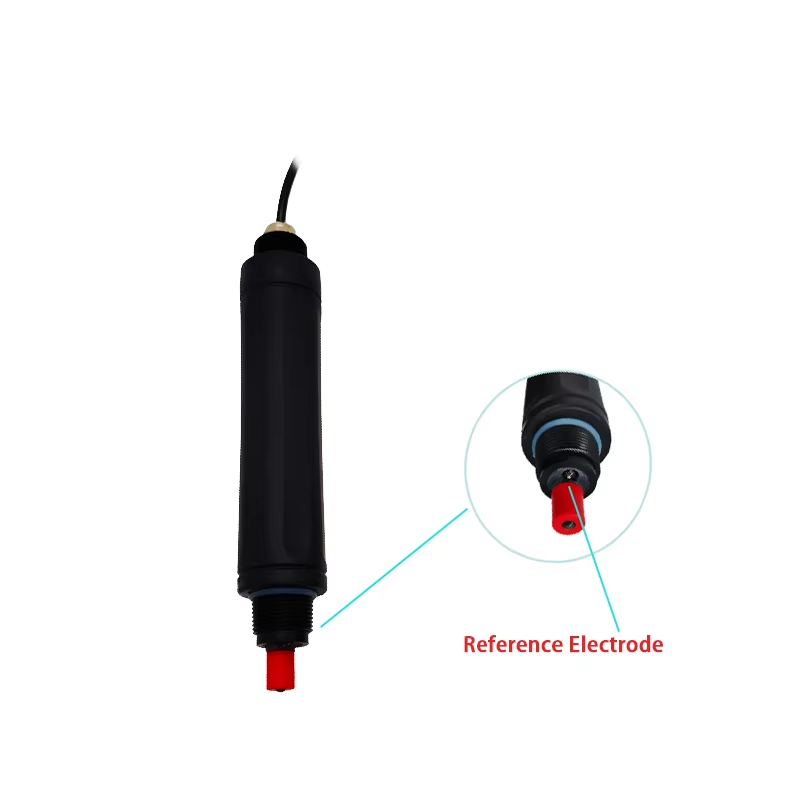I-Peru Iphumeza i-Ammonium Sensors eziPhakamileyo zokujongana neMiba yoMgangatho waManzi
Lima, PeruKwinqanaba elisebenzayo lokuphucula umgangatho wamanzi kulo lonke ilizwe, iPeru iqalise ukuhambisa i-state-of-art ye-ammonium sensors kwiindlela zamanzi eziphambili ukubeka iliso kunye nokulawula amanqanaba ongcoliseko ngokufanelekileyo. Eli nyathelo liza ngenxa yeenkxalabo ezikhulayo malunga nokungcoliseka kwamanzi aphuma kwimibhobho yezolimo, amanzi amdaka angacocwanga, kunye nemisebenzi yemizi-mveliso ebeka emngciphekweni impilo yoluntu kunye nenkqubo yendalo yasemanzini.
I-Ammonium, edla ngokuba yimveliso yezichumisi, ilindle, kunye neenkqubo zemizi-mveliso, inokubangela umonakalo omkhulu wokusingqongileyo xa ikhona kwiindawo eziphezulu. Ayibangeli nje igalelo kungcoliseko lwezondlo, olunokukhokelela ekudubuleni okuyingozi kwe-algal, kodwa ikwabeka imingcipheko yempilo kuluntu oluxhomekeke kule mithombo yamanzi ukusela nokunkcenkceshela.
Ubuchwephesha obutsha bokuBeka iliso ngokukhawuleza
Izinzwa ze-ammonium ezisanda kuphuhliswa zisebenzisa itekhnoloji ye-electrochemical yokusika ukulinganisa ukugxila kwe-ammonium ngexesha lokwenyani. Esi sikhundla siphawula ukuphucuka okubalulekileyo kwiindlela zokuvavanya amanzi emveli, ezinokuthatha iintsuku ukuvelisa iziphumo. Ngezi zivamvo, amagunya asekuhlaleni kunye nee-arhente zokubeka iliso kokusingqongileyo zinokuqaphela ngokukhawuleza iziganeko zosulelo kwaye zithathe amanyathelo akhawulezileyo ukunciphisa iimpembelelo zazo.
UGqr Jorge Mendoza, umphandi ohamba phambili kwiprojekthi, wathi, "Ukuqaliswa kwezi zinzwa kuya kuguqula indlela esijonga ngayo umgangatho wamanzi. Idatha yexesha langempela ivumela ukuba siphendule ngokukhawuleza kwiziganeko zokungcola, ukukhusela zombini i-ecosystems kunye noluntu lwethu."
Ukusasazwa kunye nokuBandakanya koLuntu
Isigaba sokuqala sokuthunyelwa kwenzwa sigxile kwimithombo yamanzi ebalulekileyo, kubandakanywa nemilambo yaseRímac kunye neMantaro, eyimithombo ebalulekileyo yamanzi kwizigidi zabantu basePeru. Oorhulumente basekhaya, ii-NGOs zokusingqongileyo, kunye nemibutho yasekuhlaleni basebenza kunye ukuqinisekisa ukuba iteknoloji ifakwe kwaye igcinwe ngokufanelekileyo.
Kwintlanganiso yasekuhlaleni ebibanjelwe eLima, abahlali bavakalise ukulithanda eli phulo. UAna Lucia ongumlimi wasekuhlaleni wathi: “Kangangexesha elide, imilambo yethu ingcolisekile, nto leyo echaphazela impilo yethu nendlela esiphila ngayo. "Ezi zivamvo zisinika ithemba lokuba singakwazi ukulawula ngcono ubutyebi bethu bamanzi."
Isicwangciso esiBanzi sokusiNgqongileyo
Ukwaziswa kwezinzwa ze-ammonium yinxalenye yesicwangciso esibanzi sasePeru sokusingqongileyo ukulwa nongcoliseko kunye nokugcina ubutyebi bayo bezityalo nezilwanyana ezohlukeneyo. Urhulumente wasePeru ugxininisa ukudityaniswa kobuchwephesha kwimisebenzi yolawulo lwendalo esingqongileyo, ejolise ekudaleni ubudlelwane obuzinzileyo phakathi kwemisebenzi yezolimo, uphuhliso lwamashishini, kunye nokugcinwa kwendalo.
UMphathiswa wezeNdalo uFlavio Sosa ubalaselise ukubaluleka kobu bugcisa kwingxelo yakutshanje: “Sizibophelele ekukhuseleni ubuncwane bethu bamanzi nokuqinisekisa umgangatho wabo ukwenzela isizukulwana sangoku nesexesha elizayo.” Ezi zivamvo zeammonium zisisixhobo esibalulekileyo kumlo wethu nxamnye nokungcoliswa kwamanzi.
Impembelelo kuMgaqo-nkqubo noMgaqo
Njengoko idatha evela kwi-sensors iqala ukungena, kulindeleke ukuba yazise imimiselo emitsha malunga nokucocwa kwamanzi amdaka kunye nezenzo zezolimo. Abaqulunqi bemigaqo-nkqubo baya kuba nokufikelela kulwazi lwexesha lokwenyani olunokukhokelela kwimimiselo esebenzayo ejolise ekulawuleni imithombo yongcoliseko, ngaloo ndlela iphucula umgangatho wamanzi kulo lonke ilizwe.
Iingcali zinethemba malunga nokubakho kweli nyathelo lokuvusa inguqu kwiindlela zolawulo lwamanzi kuMzantsi Merika wonke. UGqr. Mendoza wongeze ngelithi, “Ukuba iyaphumelela, le projekthi inokuba ngumzekelo kumazwe ajongene nemingeni efanayo yokusingqongileyo.”
Isiphelo: Ikamva eliZinzileyo laManzi ePeru
Ukuthunyelwa kwezinzwa zeammonium ePeru kubonisa inkqubela phambili ebalulekileyo kwindlela yelizwe yokuhlola umgangatho wamanzi. Ngokusebenzisa itekhnoloji entsha, iPeru ijonge ukujongana nemiba ecinezelayo yokusingqongileyo ngelixa ikhusela impilo yabemi bayo kunye nenkqubo yendalo.
Njengoko eli nyathelo liqhubeka, linokuthi livule indlela yokwandisa ulwazi loluntu, imimiselo engqongqo, kunye nezenzo ezizinzileyo kulawulo lobutyebi bamanzi, ukubeka iPeru njengenkokeli kulawulo lokusingqongileyo kummandla.
Ukufumana ulwazi oluthe kratya lomgangatho wamanzi,
nceda uqhagamshelane Honde Technology Co., LTD.
Email: info@hondetech.com
Iwebhusayithi yeNkampani: www.hondetechco.com
Ixesha lokuposa: Jan-13-2025


